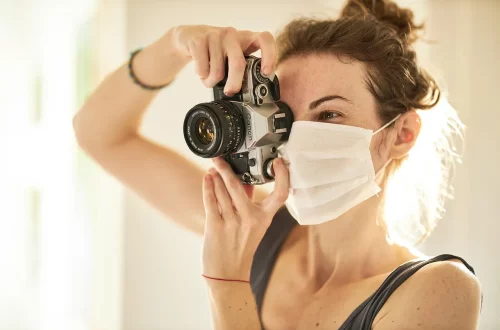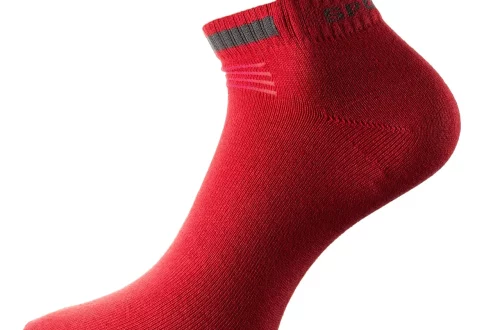
Exploring the Art of Hairy Naked Men in Photography
Exploring the intersection of masculinity, vulnerability, and aesthetics, hairy naked men in photography invite viewers to contemplate the raw and unfiltered essence of the male form. This unique subject matter has gained traction in contemporary art, often challenging societal norms and expectations surrounding masculinity and body image. Photography, as a medium, affords a platform to express the multifaceted aspects of the male experience, allowing for a narrative that is both personal and universal.
The portrayal of hairy naked men can evoke a range of emotional responses, from admiration and desire to discomfort and critique. This duality reflects the complexities of human nature and the societal constructs that often dictate how we perceive the male body. In a world increasingly focused on unrealistic beauty standards, the celebration of natural body hair and diverse forms challenges viewers to embrace authenticity and reject the polished ideal often perpetuated in mainstream media. As we delve deeper into this artistic exploration, we will uncover the implications of such imagery and its role in redefining masculinity.
Breaking Down Stereotypes: The Role of Hair in Masculinity
Hair has long been a symbol of masculinity, often associated with virility, strength, and dominance. From ancient civilizations to modern times, the presence of body hair has been celebrated or vilified, depending on cultural contexts. In photography, the portrayal of hairy naked men serves as a powerful commentary on these evolving perceptions.
In many cultures, body hair is viewed as a mark of masculinity, representing a man’s journey into adulthood and his ability to conform to traditional masculine ideals. However, the contemporary art scene has begun to challenge these stereotypes, highlighting how hair can also signify vulnerability and individuality. Photographers who focus on hairy male subjects often aim to dismantle the preconceived notions tied to masculinity, allowing for a more inclusive understanding of what it means to be a man.
The artistic representation of hairy bodies can evoke a sense of intimacy and connection. By showcasing the natural state of the male form, photographers invite viewers to reflect on their own perceptions of beauty and desirability. This challenge to traditional aesthetics encourages a broader acceptance of diverse body types and fosters a dialogue about self-acceptance and authenticity.
Furthermore, the choice to feature hairy naked men in photography often acts as a rejection of the hypersexualized representations that dominate popular culture. By presenting men in a more raw and unfiltered light, artists can create a space for vulnerability, urging audiences to confront their biases and embrace a more holistic view of masculinity that includes emotional depth and sensitivity.
Ultimately, the portrayal of hairy naked men in photography is not merely an exploration of physicality but an invitation to consider the deeper implications of masculinity in a rapidly changing world. Through this lens, we can begin to appreciate the beauty of the imperfect and the significance of celebrating the authentic self.
Artistic Expression Through Photography: Embracing Vulnerability
Photography as an art form provides a unique medium for exploring vulnerability and intimacy. When capturing hairy naked men, artists often focus on the subtleties of the human experience, revealing layers of emotion that resonate deeply with viewers. This form of expression transcends mere aesthetics, inviting audiences to engage with the stories woven into each image.
Through careful composition, lighting, and framing, photographers can evoke a sense of vulnerability that challenges the viewer’s preconceived notions about masculinity. By presenting men in their natural state, artists create a space for authenticity that celebrates the human experience in all its complexities. The act of baring oneself—both physically and emotionally—becomes a powerful statement about self-acceptance and the courage to defy societal expectations.
Moreover, the representation of hairy naked men in photography can serve as a form of rebellion against the ideals perpetuated by commercial media. In a society where digital manipulation and airbrushing dominate visual culture, the embrace of natural bodies becomes a radical act of self-love. This celebration of authenticity encourages viewers to reflect on their own relationships with their bodies and the societal pressures that often dictate their self-worth.
Photographers often collaborate with their subjects to create a safe and trusting environment, allowing for genuine expressions to emerge. This collaborative approach fosters a sense of connection that elevates the final image, transforming it into more than just a photograph—it becomes a shared experience. The resulting images can provoke thought, inspire dialogue, and ultimately contribute to a greater understanding of the complexities of masculinity.
In summary, the artistic expression found in the photography of hairy naked men transcends visual appeal. It serves as a powerful commentary on vulnerability, authenticity, and the ongoing evolution of masculinity. By embracing these themes, photographers invite audiences to confront their biases, challenge societal norms, and celebrate the beauty of the human experience.
Cultural Perspectives: How Different Societies View the Male Body
The perception of the male body, particularly in its natural state, varies widely across different cultures and societies. In some cultures, body hair is celebrated as a symbol of strength and virility, while in others, it may be viewed as unkempt or undesirable. This diversity in perspectives shapes the way hairy naked men are represented in photography and the narratives that accompany these images.
In Western cultures, for instance, the ideal male body has often been defined by smoothness and a lack of body hair, reflecting a historical preference for a polished aesthetic. This preference has been perpetuated by media representations that often favor chiseled, hairless physiques. However, as conversations surrounding body positivity and inclusivity gain momentum, there is a growing movement to embrace more diverse representations of masculinity, including hairy bodies.
Contrastingly, in certain Indigenous cultures, body hair can symbolize wisdom, connection to nature, and a deep understanding of one’s identity. In these contexts, hairy naked men may be viewed not just as physical representations but as embodiments of cultural heritage and pride. Photography that captures these aspects can serve to educate audiences about the richness of different cultural narratives surrounding masculinity, offering a counter-narrative to the often narrow definitions prevalent in mainstream media.
In addition, social movements such as the body positivity movement have played a significant role in reshaping perceptions of masculinity. By advocating for the acceptance of all body types, these movements challenge the notion that hairiness or any other natural characteristic is undesirable. Photographers who align with these movements often seek to highlight the beauty in diversity, encouraging viewers to embrace their own bodies and appreciate the uniqueness of others.
Ultimately, the cultural perspectives surrounding hairy naked men in photography reveal the complex interplay between societal norms, individual identity, and artistic expression. By exploring these themes, photographers can challenge stereotypes and promote a more nuanced understanding of masculinity that transcends geographical and cultural boundaries.
Impact on Self-Image and Body Positivity
The representation of hairy naked men in photography has significant implications for self-image and the broader body positivity movement. By showcasing the natural state of the male form, artists contribute to a cultural shift that encourages individuals to embrace their bodies without shame or judgment. This representation is not just about aesthetics; it’s about fostering a sense of belonging and acceptance in a world that often imposes unrealistic standards.
For many viewers, seeing images of hairy naked men can be a transformative experience. It invites individuals to reflect on their own body image and the societal pressures that often dictate how they perceive themselves. When hairiness, a trait that is often stigmatized, is celebrated in art, it challenges viewers to reassess their biases and embrace the uniqueness of their own bodies.
Furthermore, the visibility of diverse body types in photography can empower individuals who may have felt marginalized or excluded by mainstream representations of masculinity. By presenting hairy bodies as beautiful and worthy of celebration, artists contribute to a more inclusive narrative that resonates with a wider audience. This inclusivity fosters a sense of community and support among individuals who share similar experiences and challenges related to body image.
The impact of such representations extends beyond individual self-image. As society becomes more accepting of diverse forms of masculinity, there is a collective movement toward redefining beauty standards. This shift is essential in promoting mental health and well-being, as individuals are encouraged to prioritize self-acceptance over societal validation.
In conclusion, the portrayal of hairy naked men in photography plays a crucial role in shaping perceptions of self-image and body positivity. By challenging conventional beauty standards and embracing authenticity, photographers contribute to a cultural dialogue that emphasizes acceptance, diversity, and the celebration of the human experience.
**Note:** This article is for informational purposes only and should not be considered medical advice. For any health-related concerns, please consult a qualified healthcare professional.




